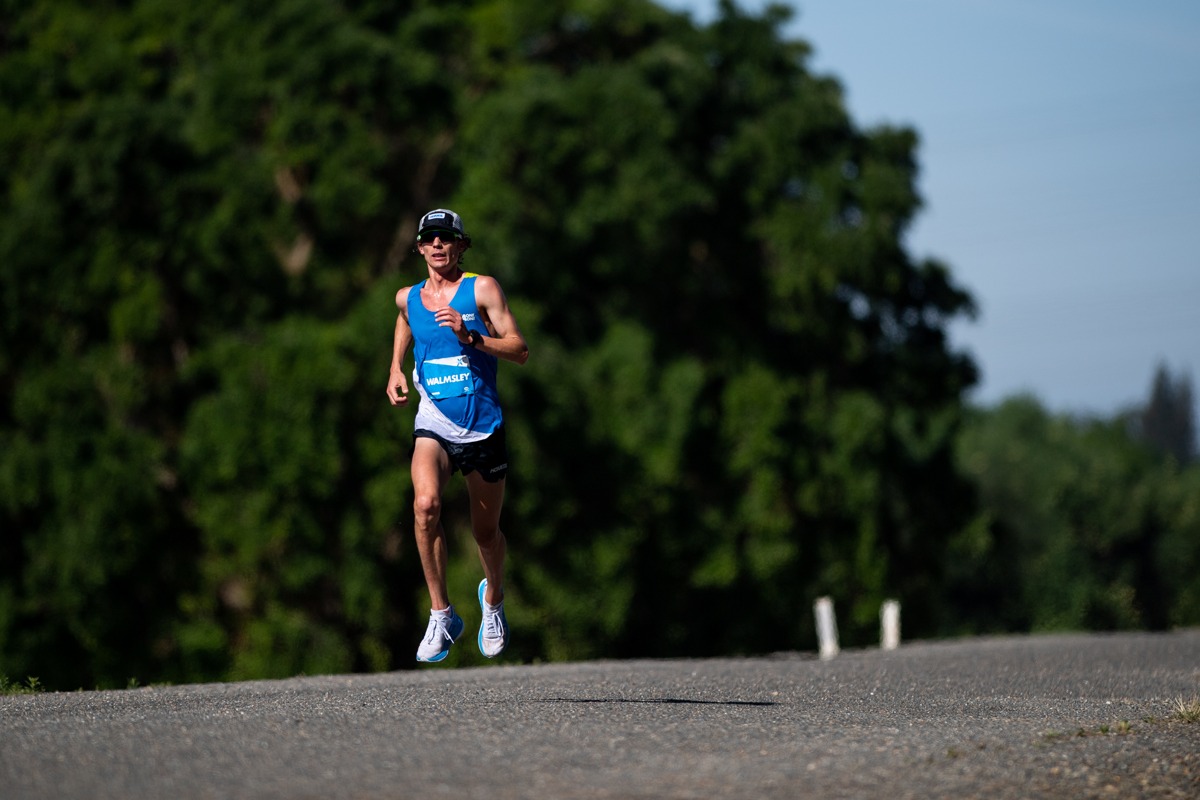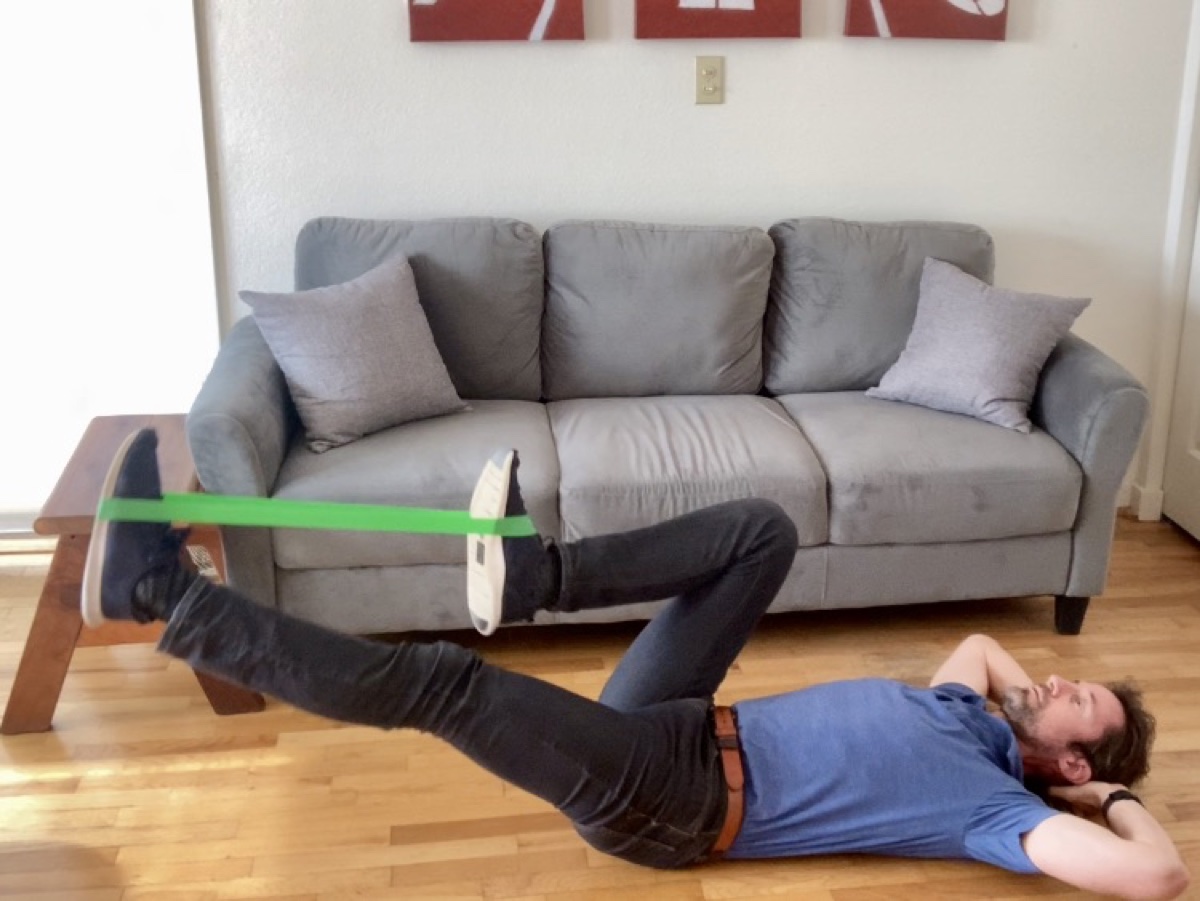 Six years ago, one of my most impactful, high-trafficked articles, “Elite Feet,” highlighted the importance of balanced foot loading and powerful push off for optimal stride efficiency. But a half decade on, it turns out we’ve been missing the other half of the story.
Six years ago, one of my most impactful, high-trafficked articles, “Elite Feet,” highlighted the importance of balanced foot loading and powerful push off for optimal stride efficiency. But a half decade on, it turns out we’ve been missing the other half of the story.
What happens to the foot after that push off and until it lands on the ground again is just as important for your strongest running stride! Let’s dive in.
Toe Off and Toe Up: The Foot Leads the Charge
To appreciate the crucial role of a strong, athletic foot to the overall running stride, it’s important to first recognize the synergistic quality of the running pattern. The running stride is broken into two distinct, reciprocal patterns:
- Flexion — the upward, forward, and flexed movement of the leg, and
- Extension — the downward and rearward extension of the leg.
We should quickly note that flexion and extension only describe the dominant plane of movement. Small but very important contributions also come from the frontal and transverse planes, but aren’t considered in this article.
While this flexion and extension are easiest to observe in the hip and knee, major contributions also come from the ankle:
- Ankle flexion — the dorsiflexion or upward bending of the foot and toes, and
- Ankle extension — the plantarflexion or downward bending of the foot and toes.
Why would such a relatively small movement at the foot and ankle be considered the most important in the stride? There are two reasons.
The feet power the glutes.
First, as we described in the first Elite Feet article, a strong toe-off doesn’t just provide active push-off power. That plantarflexion strength also maintains a stable ankle. And, as if we were pole vaulting over that leg, a strong ankle allows for more prolonged and stronger hip extension. Conversely, a weak foot and ankle would allow that “pole” to bend, limiting our propulsion through the air. Lastly, a strong foot and ankle stores ground-reaction energy, and when the hip finally reaches end-range extension, that foot plantarflexes for one last burst of push-off power.
The feet power the core.
But what about the other end? What happens after the toes push off? This is where things get interesting.
The second and equally crucial aspect of foot power should happen immediately upon leaving the ground. The toes, foot, and ankle should bend upward. Minor as that may seem, that little upward foot flex has massive neuromuscular consequences in that it helps to hold the trunk steady.
The Foot-Core Connection
Toe-up is so crucial to the flexion lift of the leg because of the foot’s hardwired connection to the core-stability system. Upon push off, an upward-flexing foot automatically activates the abdominals to:
- Move the flexing leg’s pelvis upward and forward, and
- Stabilize the trunk and pelvis to prepare for opposite-leg landing.
The foot and pelvis, which are the bookends of the lower limb, work together to create upward and forward flexion of the whole leg. But more importantly, the foot-flex triggers the core-stability system to hold the spine and pelvis steady as we fly mid-air. This floating stability response is what keeps the whole system stable when, a third of a second later, we land on the opposite leg.
It’s a brilliant evolutionary wiring system that creates both peak take-off propulsion and maximal stability when we eventually land. And it’s the flexing foot that initiates this synergistic trunk-and-leg mobility and stabilization system! Without the foot as the trigger, the leg will still flex, but the core fails to efficiently fire.
This video explains this a little more:
Trail Running and Ultrarunning Challenges Efficient Footwork and Causes Lost Flexion Efficiency
As it does in many other areas, trail running and ultrarunning challenges the foot’s athleticism. Poor footing often impairs our ability to powerfully toe off during the stance phase. And slick, rocky, or otherwise unstable terrain also challenges our ability to foot flex. Challenging footing often turns a confident, efficient stride into a shuffle, with insufficient foot-first, toe-up flexion. Indeed, it often feels safer to swing a leg through with a downward-pointed toe, so as to softly land on the forefoot. But ironically, lacking toe-up swing through, the system is inherently inefficient and less stable upon landing on the toes only versus landing on an upward-flexed whole foot.
Moreover, the demands of trail running and ultrarunning can also fatigue foot and ankle flexion.
Unfortunately, what we adopt during times of high intensity or fatigue often becomes the new norm, and the efficient, core-first flexion strategy is lost. This brings a host of potential problems:
- Decreased top-end speed — Peak hip flexion, largely responsible for top speed, is compromised without a core-first strategy.
- Decreased endurance — Without the core helping out, the flexion system will fatigue more quickly.
- Increased hip-flexor load — The hip flexors can, without help from the core, become overused.
- Increased landing stress — Deficient core-first flexion will result in a low and long forward stride, which results in over-striding and the increased landing stresses that come with it. Moreover, without that automatic core engagement mid-air, the initial landing stress will be higher.
- Increased toenail and blister problems — This is another consequence of impaired flexion mobility and landing patterns.
- Increased tendency to trip and fall — Deficient toe-up flexion is possibly the biggest factor in trips and falls on the trails.
Engaging an Active Foot During the Run Stride
Actively engaging an athletic foot must include a strong foot push off. But once push off occurs, an active toe-up flexion strategy is what should happen next. Here’s what this feels like:
The toes, foot, and ankle flex upward, engaging the shin muscles.
This may be the most muscularly challenging strategy: to upward lift the toes immediately after push off. Nearly every elite runner does this without thought, but to reinstate this strategy if it has been lost can feel challenging and possibly fatiguing to the anterior shin muscles.
The whole leg curls straight upward beneath the pelvis.
A short lever is a fast lever, and when the toes flex up, the whole leg will follow. This brings the heel close beneath the pelvis as the leg swings through, leading to a substantial improvement in speed and efficiency. This, more than any other factor, is the action that drives the “Walmsley Stride.”
Landing on a whole foot.
This often feels the most awkward. Rather than landing on seemingly light toes, a toe-up swing-through strategy will cause your foot to stay neutral during the swing phase and will land relatively flat.

Jim Walmsley using good running form on his way to setting a 50-mile world record in 2019. Photo: Hoka One One
Here’s what this looks like:
- A toe that is pointed straight downward at push off,
- A toe that is flexed up during the swing phase, and
- A toe-up, 90-degree ankle angle upon whole-foot landing.
This video both describes and demonstrates this process:
Exercises for a Strong, Flexing Foot
On the surface, any exercise to strengthen the anterior shin dorsiflexors is a good starting point for developing that ankle flexion. However, the best bang for your buck is to do exercises which require you to combine foot dorsiflexion with the rest of the leg’s flexion pattern.
Last year’s article on hip flexion contains a nice variety of exercises working the whole flexion pattern. The key is to accentuate the toe-up dorsiflexion as you are doing them! Here are photos of two exercises from that article:
I also like this new exercise, which combines a heel raise (plantarflexion and hip extension) with contralateral flexion:
Other exercises that train the flexion system include:
- Diagonal Chop — This is a great initial activation of this whole system.
- Short and Long — When doing this, emphasize the foot and ankle initiating both the flexion and extension movements.
- Ice Skater – Again, place emphasis on the foot and ankle initiating both the flexion and extension movements.
- 100-Up Runner Hops — Emphasize toe up in the upward jumping motion.
Lastly, ankle-specific running drills can help awaken the foot. This is my favorite. Work on both toes up and toes down as you do this!
Conclusion
Accentuating foot action in both flexion and extension while running is a formidable challenge. But like many things in life, a rich payoff is possible, especially if you struggle with hip flexion, foot and ankle problems, tripping and falling, or myriad other issues. Get out there, awaken the feet, and find your best running stride.
Call for Comments
- How is your foot and ankle strength for running?
- Does it feel like you need to develop more ankle flexion and extension strength?
- Does trail running fatigue your ankles faster than road running?


